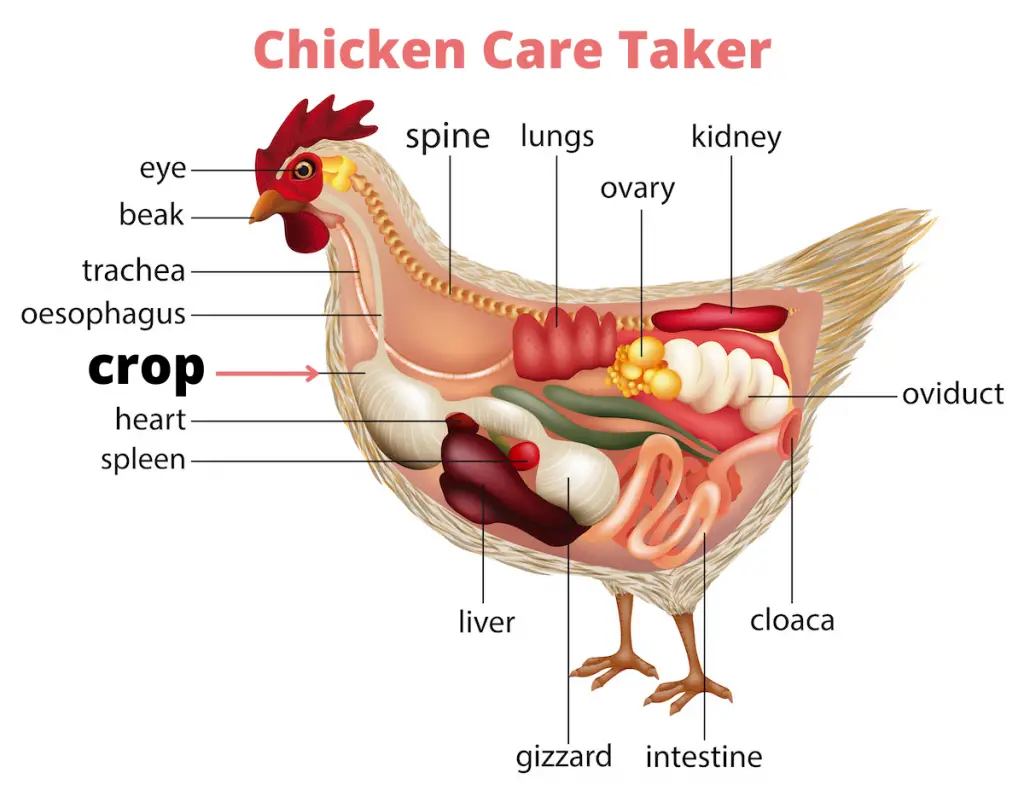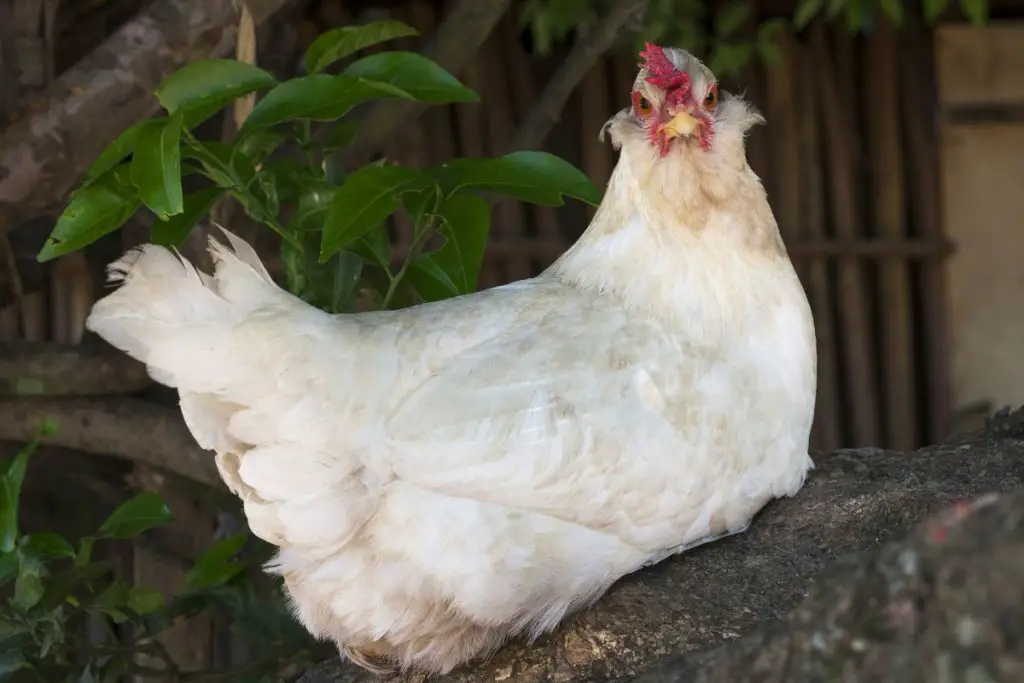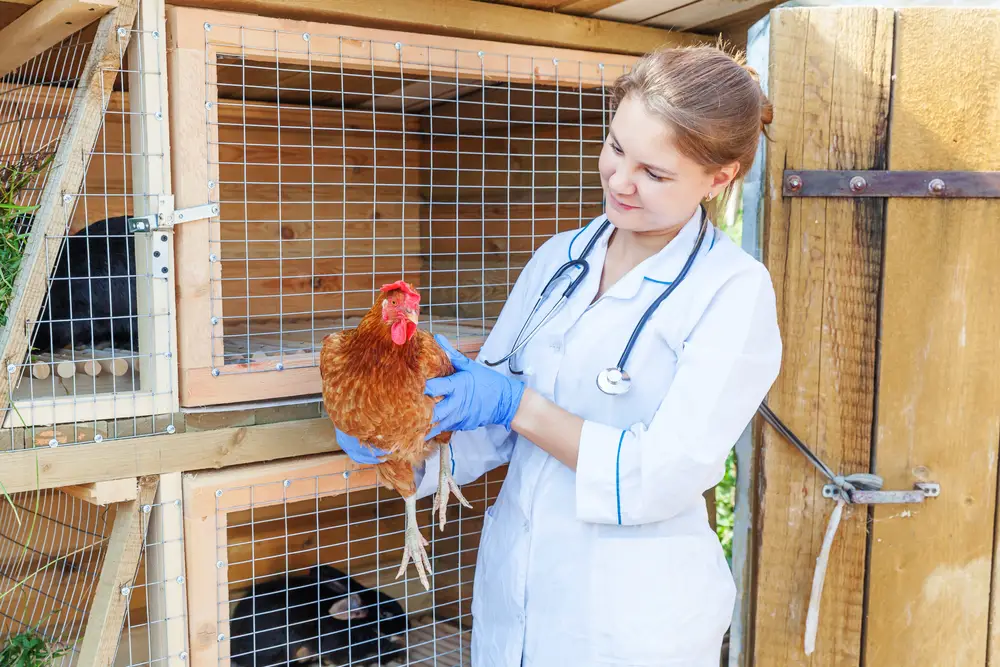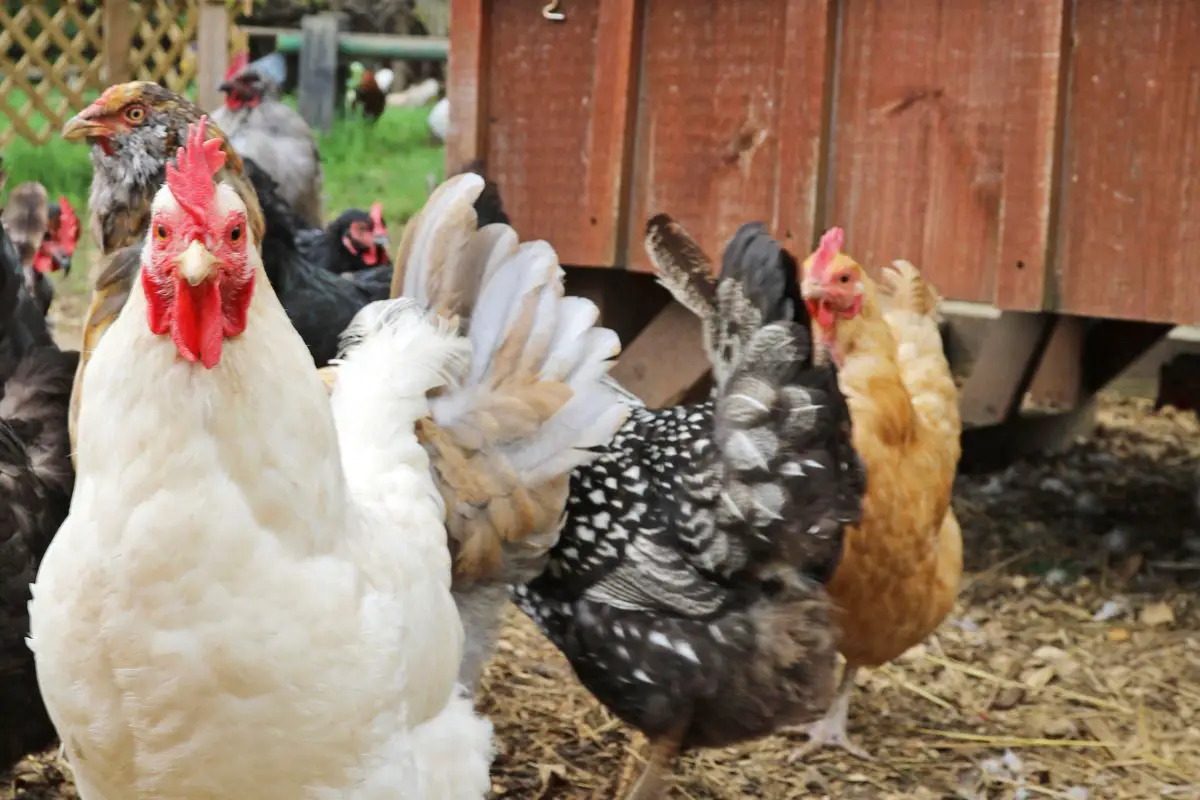Sour crop in chickens a type of yeast infection caused by Candida Albicans which is found in a chicken’s crop. This can cause the normal function of the crop to cease, which results in digestive system issues.
If your backyard chickens have sour crop, it is important to identify the bacterial infection as soon as possible and treat it immediately as an impacted crop can cause serious digestive tract issues, affecting chicken health to the point where a chicken can lose weight and die.
Much like thrush in humans, crop problems stem from an overabundance of bacteria and require antifungal treatment to resolve.
Chicken keepers need to be vigilant in resolving crop issues and providing crop treatment.
This article will cover how sour crop occurs, what the signs of sour crop are, and how to treat and prevent sour crop in your flock.
Where is a Chicken’s Crop?
A chicken’s crop is located at the end of the esophagus. It is a firm area located to the right of the breastbone and can be felt after a chicken has eaten.

When a chicken eats, the food travels through the chicken’s mouth, down the esophagus, and into the crop, where it waits to be passed through the proventriculus.
The proventriculus adds enzymes to help break down the food before passing it to the gizzard, where food is rolled around by the gizzard muscle and with the help of grit is made into a paste-like substance.
This substance is then passed through the remainder of the digestive tract, and nutrients are extracted before being excreted as a chicken’s poop.
How Can You Tell that a Chicken has Sour Crop?
The first sign of Sour Crop is your chickens having a crop that is not flat and may feel full and firm first thing in the morning, prior to a chicken having feed. The crop may be sore, so be careful when examining your chickens.
You may be able to hear a gurgling sound from fermentation if you press your ear near the breastbone area over the crop itself.

Chicken’s will often have sour-smelling breath, hence the name Sour Crop.
You may also see evidence of the infection by seeing white patches inside a chicken’s mouth.
Your chicken may be acting differently – less active and lethargic, eating less, and might have diarrhea.
Another sign that something is definitely wrong and sour crop may be the cause is seeing fluid leaking from a chicken’s beak.
What Causes Sour Crop?
Unfortunately, not only one thing can cause Sour Crop to occur.
Sour Crop can come from any of the following:
- A crop that isn’t functioning normally – there may be a blockage allowing bacteria to build up in an overly full crop
- Impacted crop which doesn’t allow food to pass through normally
- Antibiotics which can kill off good bacteria which keeps the bad bacteria in check
- Ongoing infection
- Worm infestation
- Injury to the crop area itself causing crop impaction
- Tough, fibrous, long grasses consumed by the chicken which can cause impaction from strands of grass not being passed through the crop
- Improper diet, unusual chicken feed or moldy foods
How do you Treat Sour Crop in Chickens?
If you can visit a trained veterinarian, that is the best thing to do. Chickens do not vomit, so any liquid dripping from a chicken’s beak is from an overly full crop that needs to be drained.

If a veterinarian is not available, you must do everything you can to help your chicken expel as much bacteria and liquid from the crop as possible.
Step 1: Isolate Your Hen and Massage
To start with you will want to isolate your chicken and not allow access to food or water for 12 hours. If you can lightly massage the crop every couple of hours, do so to see if that alleviates some of the build up.
Always massage from top to bottom. After 12 hours, encourage her to drink fresh water, but only a little.
Step 2: Introduce Liquid Foods
If after the 12 hour period her crop is flat, you can provide probiotics with some yogurt and plain scrambled eggs mixed with her pellets to eat. You don’t want to provide anything tough or fibrous.
For the next three to four days, feed her small portions, and allow her to have as much water as she wants.
Step 3: Check Her Crop Regularly
If you notice signs of trouble again (especially fluid leaking from her beak), you will need to take extra measures to drain the crop.
This is an important step – and one that is imperative you do correctly because if performed incorrectly, fluid could be passed into the lungs where your chicken can aspirate and die.
It’s best if two people are there to perform this in tandem. Be seated if possible, and wear old clothes that you don’t mind getting dirty.
Step 4: Drain The Crop if Necessary
To start, wrap your chicken in a towel carefully so she cannot move. Lean her over and pitched forward so her head is facing towards the ground and massage the crop from bottom to the top to encourage her to expel the liquid.
Do not do this for longer than 15 to 20 seconds at a time and return her to a normal, upright position in between.
You can do this 3 to 4 times in succession, but no more than that per day. You may get a lot of fluid but in the event that no fluid comes out, it is likely she has none to get rid of.
It is not advisable to do this if there is any option available to take her to a veterinarian because it is risky and should only be done as a last resort.
If you have to perform this without a veterinarian, and if it doesn’t help, you will need to take your chicken to a veterinarian as soon as you can for assessment and you will likely be prescribed Nystatin or other Anti-fungal medication.
What can you do to Prevent Sour Crop?
Preventing Sour Crop should be a high priority for any chicken owners, and this is best achieved by:
- Always provide fresh and clean water. You can add ACV to water to aid in keeping acidity levels at the right level to assist with digestion.
- Supplements such as fennel seeds, oregano, parsley and garlic all help with digestion
- Do not feed an excess of starchy foods such as bread
- Sugar-free plain yogurt with probiotics can occasionally be offered alongside their feed
- Stop them from pecking at long weeds and grasses while free range
- Ensure your chickens always have grit
- Keep their chicken coop clean and free from twine and string
- Regular veterinary checks and vaccinations to keep up their overall health
What Problems Can Happen After a Chicken has Sour Crop?
Unfortunately, sour crop can reoccur in some birds, especially those who have had a bad case, where the crop stays dilated and doesn’t expand and contract normally. This is a condition called pendulous crop.
This is very difficult to treat, and likely to continue to be an issue. Some chicken keepers have provided a crop bra for their birds to help them keep the correct posture while feeding.
Another problem is impacted crop which comes from eating things that a bird cannot digest – both natural things like grass, and man-made things like twine or string. You can usually tell the crop is impacted by how firm it is to touch.
To treat an impacted crop, your chicken should only be given water, and using a medical syringe or dropper, give her a bit of olive oil or coconut oil three times a day (dawn, noon, and night) to lubricate the crop and encourage the back up to clear.
You will then want to gently massage from bottom to top and try and help the chicken break up the ball inside the crop and pass what she has eaten.
If you notice in the morning that her crop is flat – that’s wonderful and you can feed her as though she has sour crop for a few days.
If not, you will need to take her to a vet to have it surgically removed – this is not something you can safely do.
Hopefully, your chickens never will have sour crop! However, in the event that they do, you now know what signs to look for, and how best to help your chickens in the event that they are stricken with it.

